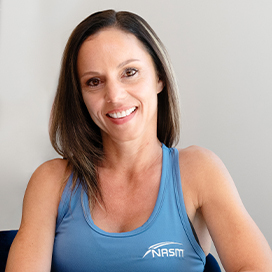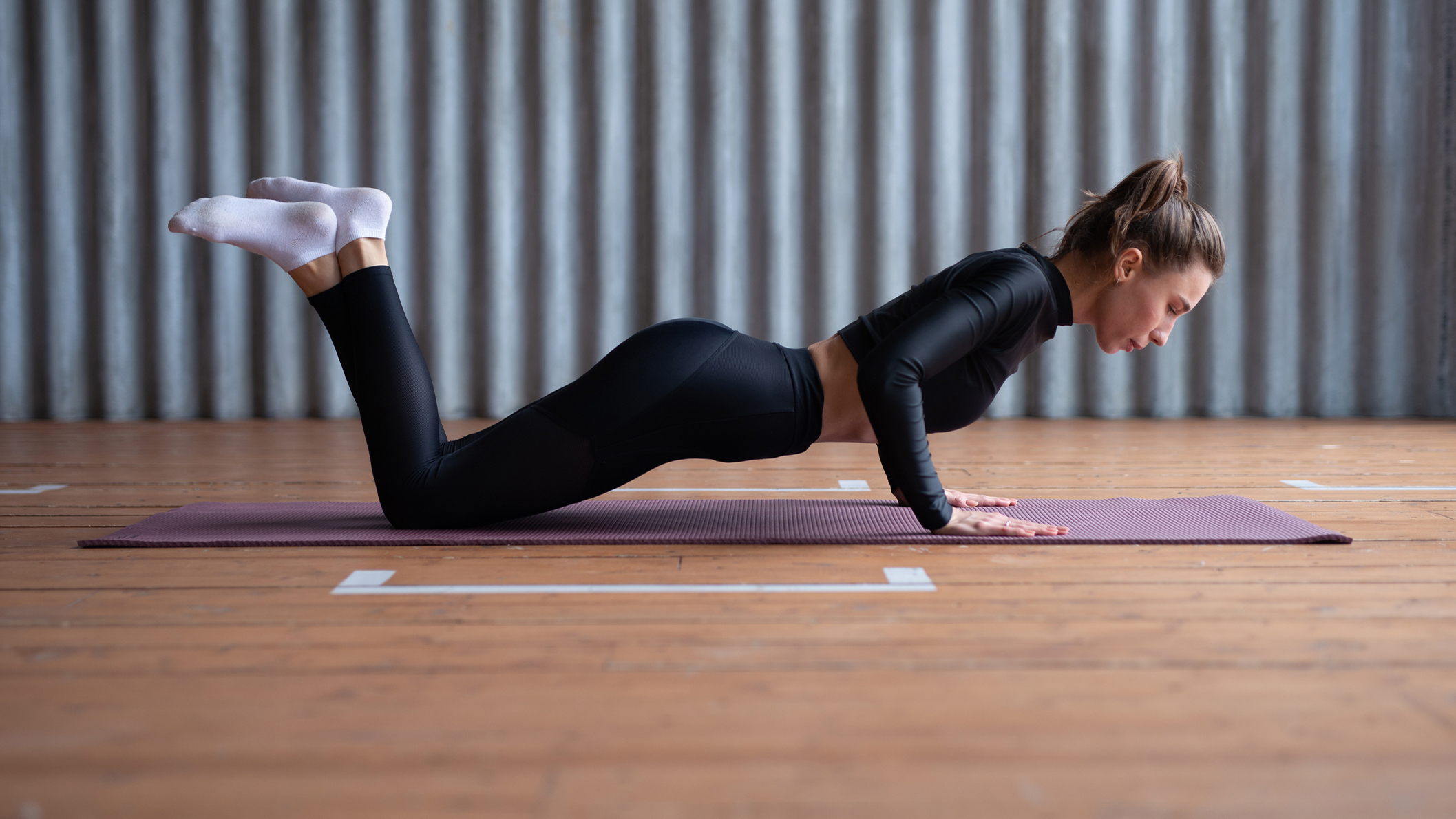I did 50 push-ups a day for a month, and the results were impressive
Doing 50 push-ups a day did wonders for my upper-body strength


Harry Bullmore
I have a confession to make: I find push-ups easy. I’ve always been able to do them despite not putting in any significant effort at the gym. My go-to exercise is running and I spend minimal time working on my upper-body strength.
Unfortunately, this ability doesn’t extend to all exercises. I can’t do burpees, despite having powerful running legs, so there was no way I was ever going to take up the 50 burpees a day challenge. Instead, I committed myself to doing 50 push-ups every day for a month.
Trainers and physios don’t recommend extreme exercise challenges like this one if your body isn’t ready, but I felt confident I could handle it. I decided to make it a little easier for myself by not completing the push-ups all in one go.
This worked out nicely for me, as I could space the exercises out and fit them around my day. Here’s how doing this compound exercise for 30 days impacted my body.

Lily Canter is an experienced fitness journalist and ultrarunner, who writes for titles like Runner’s World, Trail Running and Coach. When she’s not hitting the trails or taking on a marathon, she likes to do workouts that support her running regime.
My results
1. I got stronger at push-ups
I may have started from a solid base but that didn't mean I could suddenly pump out 50 push-ups in one go. I started by doing five sets of 10 with a short rest in between. This took about five minutes and was easier at the beginning of the day.
By the fourth day my chest was hurting, as the delayed-onset muscle soreness (DOMS) set in and my pectoral muscles were tender to touch. My body adjusted fairly quickly and by day five I could do 20 push-ups in one go, rest, another 15, rest, another 10, rest, and a final five.
The soreness stopped by the end of the first week and things progressed from there. By the end of the second week I was doing 25 push-ups at once. I found it easier to do 25 in the morning and 25 in the evening but I could tell that my strength was building. I also felt my form was getting better and I maintained a stronger, more stable posture—and the push-ups got quicker.
Start your week with achievable workout ideas, health tips and wellbeing advice in your inbox.
Doing the push-ups after a long or hard run was tricky and I realized rest and recovery between push-ups was as vital as rest between runs. In fact, one day I forgot to do the push-ups and it was the next day that I increased from 20 to 25 in one go with no difficulty.

As the weeks went by, my initial quick progress started to tail off and I got niggles in my neck—probably from straining too hard. By the end of week three I reached 30 push-ups in one go, yet my progress had pretty much ground to a halt.
By the end of the month my best effort was 34 at once, followed by a further 16 after a rest. I found the routine addictive and even after the challenge was complete I carried on. Two weeks later, I'm still stuck at 34. I can knock out 20 push-ups quickly but the last 14 are a grind.
I put part of this down to the fact that my weekly mileage is currently around 75 miles, which leaves little energy left for improving my push-up strength. I am curious to see if I can eventually reach 50 in one go, though.
2. I built muscle
I didn't set out to build muscle on this challenge, but I thought it would be interesting to see how push-ups might change my body composition.
At the beginning of the challenge I measured my biceps, which are pretty measly given that I am a “bag of bones” long-distance runner—as my husband affectionately calls me. I also measured my torso to see if my pectoral muscles would grow.
Both did increase. My left and right bicep increased by 6mm and my chest expanded by 2.5cm. I completed a canicross race (running with a dog) at the end of the challenge and was surprised at how defined by upper arms looked in the photos.So, push-ups seem to be an effective bodyweight arm workout.
3. My core got stronger
Push-ups begin in the plank position, an exercise that is well known for developing your core muscle and strengthening your midsection, but when you are doing a push-up it feels like your arms are doing all the work.
Actually, the abdominal muscles are working hard to protect your lower back and keep your body stable. The biggest surprise to me at the end of the challenge was the impact on my abs.
I had more definition and felt stronger running, particularly when engaging my core while running uphill. I also managed to achieve a parkrun personal record, coming in at less than 23 minutes.
I’m going to continue incorporating push-ups into my daily routine, although I will include a couple of rest days a week to allow adaptation to take place. And, who knows, maybe I'll reach that golden 50!
How to do a push-up

- Start in a plank position on the floor with your hands slightly wider than shoulder-width apart, arms straight, and legs straight. Maintain a straight line from your head to your heels and engage your core.
- Bend your elbows and lower your chest towards the floor. Stop once your elbows reach 90°, and hold this position.
- Breathe out as you straighten your arms back to the starting position.
Form tips
While the above step-by-step guidance is useful, it doesn’t get into the nitty gritty of how best to perform the move. We asked National Academy of Sports Medicine (NASM) master trainer Wendy Batts to talk us through the perfect push-up.

Wendy Batts is an assistant professor in exercise science at PennWest California and a regional master instructor for the National Academy of Sports Medicine (NASM). She has more than 25 years' experience in the fitness industry and holds a master's degree in exercise science and health promotion.
Hand positioning
"Some people say that your hands need to be in line with your shoulders. I just tell people to get into a comfortable position and make sure your hands aren’t too far forward so that you’re going to elevate your shoulders," Batts says.
Elbow angles
"You don’t want your elbows to be out so wide that they’re perpendicular to your body, because at that point you’re putting yourself in a pinch position in your shoulder. You want your elbows in a downward position. Think about a 45° angle between your elbow and your body. But if somebody is more comfortable doing it one way than another then that’s fine too."
Muscle engagement
"Squeeze your stomach, squeeze your glutes, squeeze your quads and try to maintain a neutral spine throughout [keeping your body in a straight line from your head to your heels]," says Batts. This should keep you firing up all the right muscles.
Muscles worked in a push-up
The push-up is a compound exercise, working multiple muscles and joints at once.
"The primary muscles you’re moving and actually using are going to be your pectoralis major, the muscle defining your chest. Those are responsible for the adduction of the shoulder joint, which means bringing your arms closer to the midline of your body as you’re coming up.
"The anterior delts, in the front of your shoulder, are also really important when you’re going into shoulder flexion. And then of course you have the triceps [along the back of the upper arm] which just extend the elbow joint—crucial for getting into your finish position."
These are the main movers at play during the push-up, but they’re not the only muscles playing their part. Your core muscles are active in maintaining your posture, as you’re effectively holding a plank position throughout. And that’s not all.
"There are so many other muscles working too," Batts says. "Your serratus anterior [a fan-shaped muscle on either side of the ribs] is one of those little muscles that’s a stabilizer, and it’s super important.
"If you notice that someone is doing a push-up and they’re ‘winging’, where their shoulder blades come upward, their serratus anterior is usually very weak.”
To strengthen this area, she recommends focusing on “punching the ground” as you drive out of the bottom position of your push-up.
"That actually starts to activate that muscle and strengthens it, so then the shoulder blades lie flat on your back, which is ultimately what you want when you’re doing it correctly," Batts explains.
Benefits of a push-up
Push-ups build and strengthen the working muscles outlined above—primarily the muscles in the chest, the front of the shoulder and the triceps in the back of the upper arm.
"It’s building functional strength too," says Batts. "Push-ups transfer over to everyday movements because you need those muscles to get off the ground or push a door open. There’s a translation between what you’re doing in the gym and your daily activities."

Push-ups also don’t require any equipment, and they are scalable to suit a variety of fitness levels.
"You choose how hard you want to make it," Batts explains. "You can start with your hands up on a countertop if you’re brand new [to strength training], then work your way to the floor. Or if you don’t want to use a countertop, drop to your knees but keep your feet on the ground."
Common push-up mistakes
Batts says one of the most common mistakes she sees from people when they are performing a push-up is how they hold their head.
"When people do a push-up they always look up and in front of them. In reality you want to keep a neutral spine, so make sure your chin stays tucked in and you’re looking at the ground.
"If I looked at you from the side, your head, your back, everything should be nice and level. If you start looking up then there’s a pelvo-ocular reflex that goes from your eyes to your hips that actually starts to move your hips into an anterior [forward] position."
This, she says, will decrease the activation of your core muscles and cause you to arch your lower back.
Lily Canter is a freelance money, health and lifestyle journalist with more than 20 years' experience. She writes about fitness for Runner's World and Trail Running magazines and focuses on personal finance for Yahoo! Finance UK, Metro, The Guardian, and the Mail on Sunday. In her spare time she is an ultra-runner, canicrosser and running coach. She also co-hosts the award-winning podcast Freelancing for Journalists.
- Harry BullmoreFitness Writer